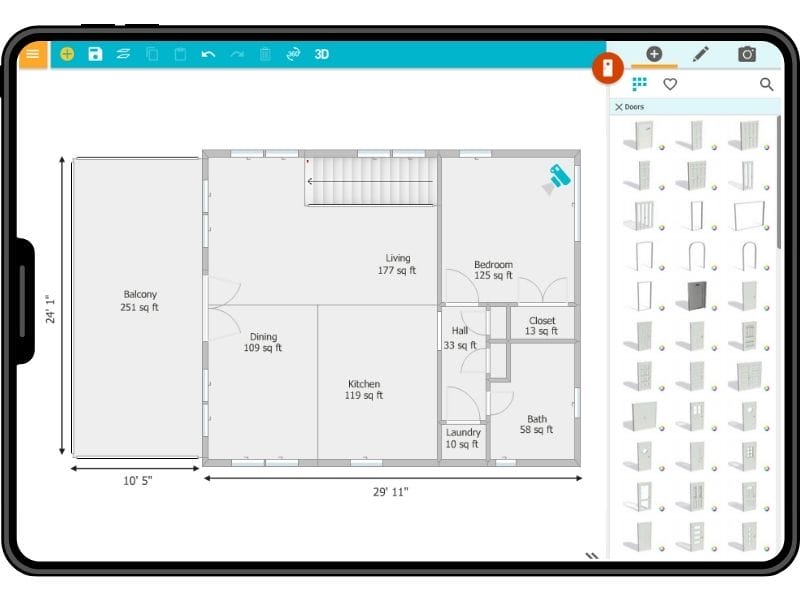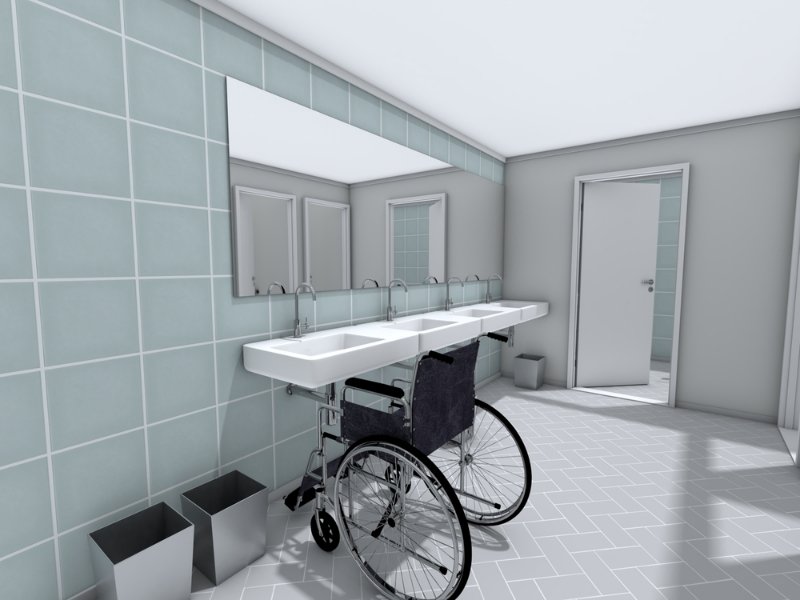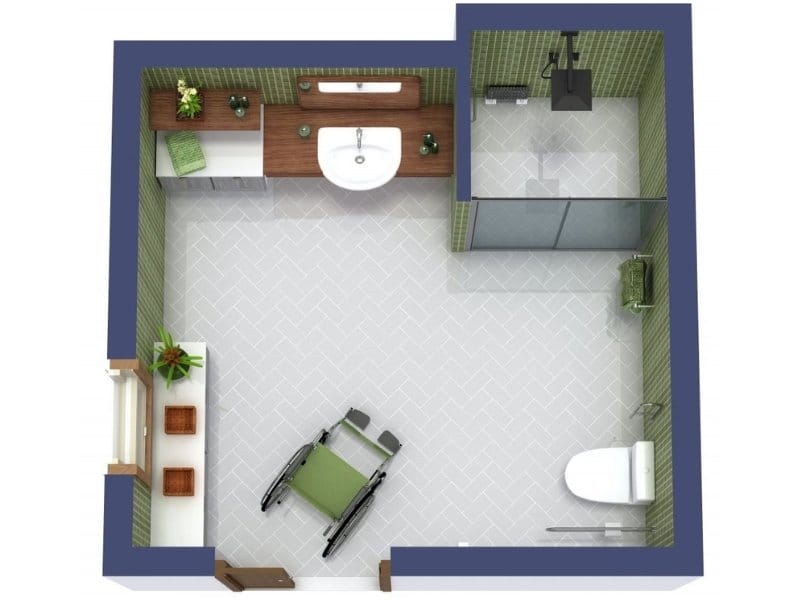How to Create an ADA-Compliant Floor Plan
The Americans with Disabilities Act (ADA) sets the standard for inclusive design, ensuring that homes and spaces work for everyone. From wider doorways to roll-in showers, ADA floor plans make daily life easier, more comfortable, and open to all.

When we think about the ideal home, we imagine a safe, comfortable, and functional space for everyone.
For people with disabilities, having a home that meets these standards is not just a luxury but a necessity. That’s where the Americans with Disabilities Act (ADA) comes in.
This groundbreaking United States law, passed in 1990, aims to ensure that people with disabilities have the same rights and opportunities as everyone else. This includes the right to live in homes that are accessible and accommodating.
Let’s explore how ADA compliance shapes home design, making living spaces more inclusive for all.
What is the ADA?
The Americans with Disabilities Act is a civil rights law that prohibits discrimination against individuals with disabilities in all areas of public life, including jobs, schools, transportation, and all public and private places open to the general public.
While the ADA mainly addresses public spaces, its principles extend to home design. By adopting these principles, home designers and builders can create environments accessible to people with a wide range of abilities.
This includes wider doorways, lower countertops, and other modifications that make it easier for individuals with mobility issues to use their homes.

Key ADA Elements
Certain elements must be considered to ensure accessibility when designing an ADA-compliant floor plan.
One of the most important aspects is an open floor plan. Open floor plans provide ample space for individuals using wheelchairs or walkers to move freely. They eliminate unnecessary barriers and create a seamless flow from one area of the home to another.

Room-by-Room Breakdown
Let’s take a closer look at how these ADA elements are implemented in different rooms of a home’s floor plan.
Kitchen
In the kitchen, for example, countertops and sinks can be designed at a lower height to accommodate individuals in wheelchairs. Cabinets and shelves should be easily reachable, and appliances should have easy-to-operate controls.

Bathroom
In the bathroom, roll-in showers are a popular feature. These showers have no steps or barriers, making them easy to access for individuals with mobility challenges.
Grab bars can be installed near the toilet and in the shower area to provide additional support.
Additionally, lever handles on doors and faucets are easier to use than traditional round knobs, especially for individuals with limited hand strength.

Living room
The living room and bedrooms should also be designed with accessibility in mind.
Furniture should be arranged for easy movement, and pathways should be clear of obstacles.
Light switches and electrical outlets should be placed at a height that is accessible to everyone, including those who use wheelchairs.

Multi-Level Home Considerations
Accessibility can be a bit more challenging for multi-level ADA floor plans, but not impossible.
One solution is the installation of elevators or stairlifts. Elevators provide a safe and convenient way for individuals with mobility issues to move between floors. They can be customized to fit the home's design and installed in new and existing homes.
Stairlifts are another option for multi-level homes. These devices can be installed on existing staircases, providing a comfortable and safe way to navigate stairs. They are especially useful in homes where an elevator may not be feasible.

Create an ADA-Compliant Floor Plan
All floor plans and images in this article were created in the RoomSketcher app:
- Create professional 2D and 3D Floor Plans
- Add accurate measurements and room labels
- Use built-in accessibility furniture, fixtures, and symbols
- Walk through your project with Live 3D
- Ensure compliance with clear layouts and wide access points
Related Articles

ADA Bathroom Requirements: Floor Plans and Templates
Planning an accessible bathroom? ADA requirements cover everything from door widths to sink placement. In this guide, you’ll find the key standards explained, plus six free floor plan templates you can open, explore, and customize for your project.

10 Best Floor Plans for Seniors
Looking for the perfect home that caters to the needs of a senior? Explore our curated list of the 10 best floor plans designed by our in-house experts.

Accessible Bathroom Size Guide with Free Templates
This guide covers the key measurements and features needed for an accessible bathroom, including door widths, wheelchair turning space, sink height, and grab bars, to help create a safe and comfortable space for everyone.
